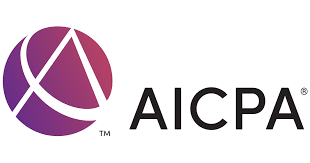When Congress passes sweeping retirement legislation, the details often come later—and those details usually come in the form of regulatory spaghetti that plan sponsors and administrators are left to untangle. Case in point: the Roth mandate under Section 603 of SECURE 2.0. And now, the AICPA has weighed in, asking Treasury and the IRS to bring some order to the chaos.
Let’s rewind. Section 603 of SECURE 2.0 (part of the massive year-end legislation bonanza known as the Consolidated Appropriations Act of 2023) dropped a bomb on catch-up contributions for high earners. It mandates that catch-up contributions for certain participants be made on a Roth basis—meaning after-tax. The proposed regs (REG-101268-24) issued in January gave us a start, but as usual, they left more questions than answers.
That’s where the AICPA comes in. In a July 1 letter, the organization asked for additional guidance, and frankly, they’re not wrong to do so.
Here’s the crux of it: if you’re 50 or older and earn over a certain threshold (currently $145,000 in wages from the current employer), your catch-up contributions must be Roth. The problem is, employers and plan providers need to know exactly how to determine who’s subject to this rule and what counts as wages. And they need to know it before they’re penalized for getting it wrong.
Kristin Esposito, director of Tax Policy & Advocacy at the AICPA, said it well: “Post-SECURE 2.0, employers and plan administrators will need clear guidance to ensure compliance of the law regarding Roth-mandated catch-up contributions.” That’s not just an understatement—it’s a polite way of saying “this is a hot mess and you need to fix it.”
One of the main asks from the AICPA? A safe harbor that lets plan sponsors rely on W-2 wage information to determine who’s above the Roth threshold. That seems like a no-brainer. If we expect HR departments and payroll providers to cross-reference every dollar from predecessor employers or related entities, we’re setting people up for failure. Not to mention the audit headaches that will follow.
And speaking of related entities, the AICPA wants the IRS to clarify how disregarded entities are treated. For employment tax purposes, disregarded entities file with their own EINs and are treated like employers. But when it comes to determining who’s the “employer sponsoring the plan” under Prop. Regs. Secs. 1.414(v)-2(b)(3) and (4), the waters are murky at best. If you’re a plan sponsor operating across multiple business structures, this guidance could mean the difference between compliance and noncompliance.
Bottom line? The intent behind the Roth mandate may be noble—getting more tax revenue now, simplifying retirement income later—but implementation is another story. Without clarity, we’re going to see a lot of errors, a lot of compliance risk, and a lot of unhappy plan sponsors.
This isn’t about dodging the Roth rule. It’s about making it administrable. Plan administrators shouldn’t have to be forensic accountants to determine who qualifies for a catch-up contribution
and whether it needs to be Roth. And participants shouldn’t be surprised by a tax treatment they didn’t ask for and might not understand.
So hats off to the AICPA for stepping in with practical suggestions. If Treasury and the IRS are smart—and I hope they are, they’ll take this feedback seriously and issue guidance that makes implementation smoother, not harder.
Because the SECURE 2.0 Act was supposed to improve retirement security—not trap employers and participants in a bureaucratic maze of unintended consequences.







